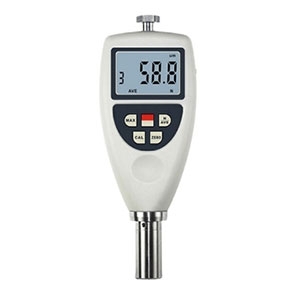A hardness tester is an instrument used to measure the hardness of materials, commonly employed in hardness testing of various materials such as metals, plastics, and rubber. However, due to prolonged use or improper operation, the hardness tester may encounter some issues. In this article, sisco will introduce common problems with hardness testers and their corresponding solutions to help users better maintain and utilize hardness testers.
Display Screen Unable to Display Normally
When the hardness tester's display screen fails to show information correctly, first, check if the power is properly connected. If the power connection is fine but the display remains inactive, it may indicate a screen malfunction. In this case, it is recommended to send the hardness tester back to the manufacturer for repair or screen replacement.
Unstable Readings or Significant Deviations
If the hardness tester shows unstable readings or significant deviations during testing, possible causes include:
- Lack of calibration: The hardness tester needs calibration before use to ensure accuracy and stability. Long-term lack of calibration or improper calibration may result in inaccurate readings. The solution is to calibrate regularly and follow the instructions in the hardness tester manual.
- Unstable testing environment: Hardness testing should be conducted in a stable environment to avoid external interference. Poor testing environments may lead to unstable readings. The solution is to choose a quiet and temperature-stable environment during testing, avoiding interference from other devices.
- Improper sample preparation: Before hardness testing, thorough preparation of the sample is necessary. Surface irregularities, impurities, or coatings on the sample may affect test results. The solution is to clean and polish the sample thoroughly before testing to ensure a smooth surface.
Wear or Damage to the Indenter
The indenter of the hardness tester, which directly contacts the test sample, may experience wear or damage after prolonged use. When the indenter shows signs of wear or damage, it may lead to testing errors. The solution is to regularly check the condition of the indenter and promptly replace it if significant wear or damage is observed.

Abnormally Large or Small Readings
If the hardness tester readings significantly deviate from standard values, possible causes include:
- Improper pressure adjustment: The hardness tester requires applying a certain amount of pressure during testing, and excessive or insufficient pressure may result in abnormal readings. The solution is to adjust the testing pressure according to the hardness characteristics of the sample.
- Internal issues with the hardness tester: Internal components of the hardness tester may experience faults, leading to inaccurate test results. The solution is to perform regular maintenance on the hardness tester and follow the manufacturer's instructions for repairs or component replacements.
Inability to Perform Automatic Conversions
Some advanced hardness testers have an automatic conversion feature that may fail to function at times. The solution is to check the hardness tester settings to ensure the correct selection of hardness standards and conversion units.
Using Tips for Hardness Tester
- Avoid overuse: The lifespan of a hardness tester is limited, and excessive use may lead to performance degradation or increased malfunctions. Therefore, schedule testing tasks appropriately to avoid overuse.
- Regular maintenance: Periodically perform maintenance tasks such as cleaning, lubrication, and calibration to extend the lifespan and ensure accurate test results.
- Environmental considerations: Use the hardness tester in a stable, dry environment free from corrosive gases to prevent external interference.
While various issues may arise during the use of a hardness tester, most can be resolved through proper maintenance and operation. Regular calibration, maintaining a stable testing environment, using the correct indenter, monitoring reading discrepancies, and considering the testing environment will contribute to the normal operation and accuracy of the hardness tester. For issues beyond self-resolution, it is advisable to promptly contact the manufacturer for repairs or replacements.

